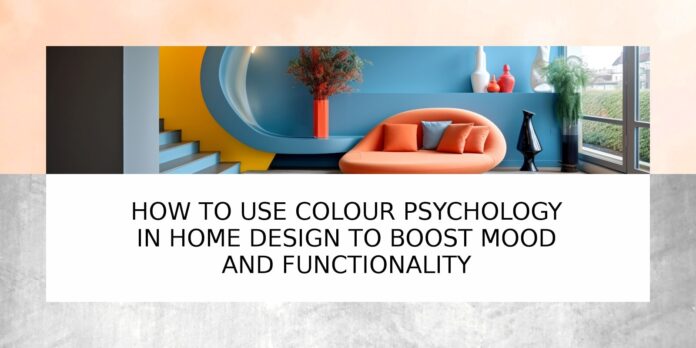Colour serves as a design tool while functioning as a psychological instrument. Home interior choices of colour affect the mental states of occupants together with their behavioural patterns and their energy levels. Smart interior design requires colour psychology because it helps designers create spaces that influence mental states and emotional health.
Colour psychology in home design plays an essential role in designing home spaces. Your home functions as your safe haven, while each room exists to serve specific functions, including relaxation, creativity, and social activities. A space requires proper colour selection to reach its maximum functionality potential. The principles of colour psychology will help you develop spaces that both match your daily routines and promote personal health.
Popular colour choices influence emotional reactions within interior spaces. The emotional connections people make with different colours will help you select suitable colours.
- Blue establishes feelings of serenity and stability and creates peacefulness in spaces. A bedroom or bathroom should use this colour because it provides essential tranquillity.
- Green functions as a natural reflection, which restores equilibrium to spaces. The combination of relaxation and focus works best in living rooms and study areas with this colour choice.
- The optimistic and cheerful nature of yellow creates a positive atmosphere in spaces. Kitchen and dining areas benefit from the energizing effects of bright yellow, but entryways and small nooks benefit from softer yellow tones that create a positive atmosphere.
- The symbol of passion and energy appears through red colour. Using red sparingly through walls or decorative items remains the best practice because excessive exposure can become overwhelming for interior spaces.
- The colour purple generates feelings of luxury and stimulates creativity while encouraging deep thought. Purple creates an excellent choice for meditation spaces, home offices, and reflection areas.
- The neutral colour palette of beige, off-white, and grey creates versatile interior design options while maintaining equilibrium. These colours enable simple combination with bold accents while creating an uncluttered, open environment.
Selecting Colours Based on Room Functions
Every area in your home functions for a specific purpose, which colour can help achieve due to the prominence of colour psychology in home design:
Soft reds, oranges, and earthy browns create the social atmosphere of living rooms while bringing energetic feelings to these areas. - The essential role of kitchens in homes makes them suitable for cheerful and vibrant colours. The colours yellow and light green help both stimulate appetite and foster social conversation in spaces.
- The bedroom requires cool colours that include light blue, lavender, and muted green because these shades create restful environments for sleeping and relaxation.
- The bathroom requires colours that are clean and serene to create a fresh and clear environment.
- A neutral base paired with blue or green accents throughout the home office creates both focus-enhancing and visually appealing conditions.
Building Harmonious Colour Palettes
For achieving a well-designed and cohesive home design, use the following methods:
The use of monochromatic schemes involves working with different shades from the same colour to create sophisticated and deep colour effects. - Analogous colour schemes pair adjacent colours on the colour wheel (blue with blue-green and green) to create a natural colour transition.
- When complementary schemes use wheel-opposite colours (such as blue and orange), they generate both contrasting effects and energetic visual impact.
Tips for Applying Colour Psychology
Natural and artificial lighting conditions produce major changes in how colours appear. The final selection of colours must be verified using both natural and artificial lighting conditions. - You can add colour elements to your space before deciding on permanent wall decorations. You can introduce colour elements to your space using cushions and rugs together with artwork and vases.
- The correct balance of any colour prevents overwhelming the space. Use neutral tones to balance more intense shades.
Conclusion
Your home’s purpose along with emotional impact will improve when you apply colour psychology principles to your interior design instead of losing style. The living surroundings experiences complete transformation through the colour, since it enhances both your mood and enables productivity and relaxation. Your home can achieve both beauty and well-being support through the selection of hues that combine aesthetic appeal with psychological benefits.



